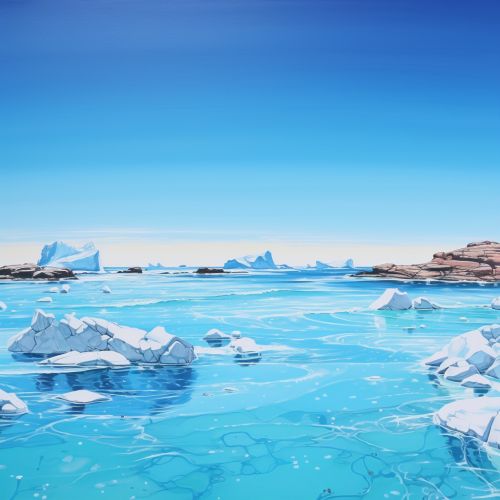Southern Ocean
Geography
The Southern Ocean, also known as the Antarctic Ocean or the Austral Ocean, is the fourth largest of the world's five oceanic divisions. It is the southernmost ocean, encircling Antarctica. The Southern Ocean is unique in that it does not have a landmass bordering it on all sides; instead, it is defined by the Antarctic Convergence, a dynamic boundary where cold, northward-flowing Antarctic waters meet and mix with the warmer waters of the Atlantic, Indian, and Pacific Oceans.


Climate
The Southern Ocean's climate is characterized by strong westerly winds, known as the Roaring Forties, Furious Fifties, and Shrieking Sixties. These winds are caused by the temperature difference between the ice-covered continent of Antarctica and the open ocean. These winds have a significant impact on the global climate, as they help to drive the ocean's thermohaline circulation, distributing heat around the planet.
Marine Life
The Southern Ocean is home to a diverse range of marine life, including several species of penguins, whales, seals, and a wide variety of fish and bird species. The ocean's nutrient-rich waters support large populations of krill, a small shrimp-like creature that is a key part of the Antarctic food chain.
Exploration and Research
The Southern Ocean has been the focus of extensive scientific research. Research stations, such as the Amundsen-Scott South Pole Station, are used to study the ocean's impact on global climate, marine life, and the Antarctic ice sheets. The Southern Ocean is also a key area for studying climate change, as changes in its temperature and salinity can have far-reaching effects on the world's climate.
Economic Importance
The Southern Ocean is also important for economic reasons. It is a major source of fish, particularly Patagonian toothfish and Antarctic krill. However, overfishing and illegal fishing have raised concerns about the sustainability of these fisheries. The Southern Ocean is also a popular destination for tourists, particularly for cruises that offer wildlife viewing and visits to Antarctic research stations.
Environmental Threats and Conservation
The Southern Ocean faces several environmental threats, including climate change, ocean acidification, and overfishing. These threats have led to efforts to conserve the Southern Ocean, including the establishment of marine protected areas and regulations to limit fishing. The Commission for the Conservation of Antarctic Marine Living Resources (CCAMLR) is an international body that manages conservation efforts in the Southern Ocean.
